By Danielle Filjon
Totem poles, feathers, and buffalo art, all stereotypical definitions of “native art”. These stereotypical ideas are what Native Art Department International (NADI) set out to change, that ‘Native art’ can be anything, and rise above its stereotypes of what we think of when considering the art of indigenous people.
With bright colors splashed upon jumpsuits, neon lights, and multimedia performance art, NADI challenges the viewer to change their perspective on the artist in relation to their art.
The NADI exhibition is produced and organized by Mercer Union, a center for contemporary art in Toronto, Canada, and features the husband-and-wife creative collaborative artist team Maria Hupfield and Jason Lujan.
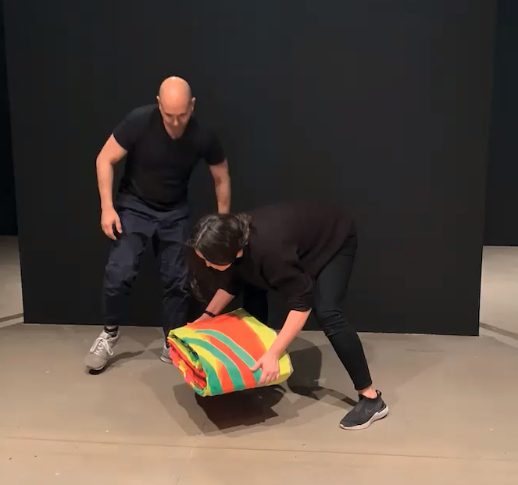
Julie Dickover, the director of Flagler College’s Crisp-Ellert Art Museum (CEAM), is responsible for planning exhibits on campus and arranging their logistic. She has worked with each artist, Maria and Jason, as they did their artist residency on campus during this year.
“Jason and Maria have very active artistic practices where they exhibit their own work,” said Dickover. “But in 2016 they started making work together under the agent of Native Art Department International.”
The idea was rooted in taking on departmental and bureaucratic language to claim authority and expertise over ‘Native Art.’
“They are rejecting this essentialist and reductive view of art,” Dickover said. This is supposed to challenge our fixed idea of what indigenous art is. Instead of being confined to its traditional topics and mediums, it has a contemporary face as well.
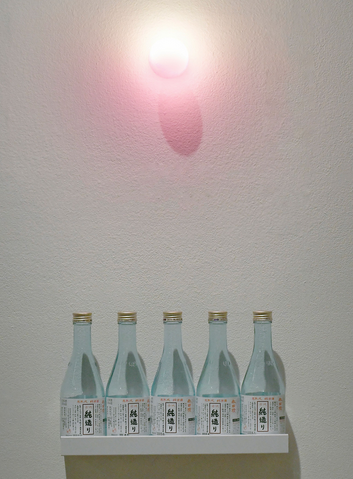
She had the project idea from Jason’s leftover sake bottles, and created it as a surprise for him.
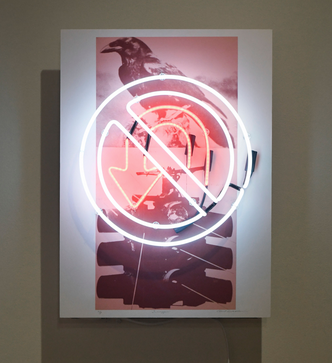
“People expect a non-white artist to make art about racial topic, this pigeonholes them”, Dickover said, “Maria and Jason wanted to express art in their own rights and show that ‘Native’ art can be purely expressive.”
You can find large screens playing performance art across the wall from Japanese sake bottles illuminated by a pink bulb in the museum. There are also opportunities to read written works of what inspired the artists along the large wooden structure in the center of the exhibit.
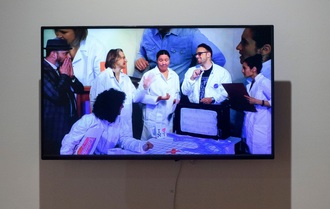
The vibrant colors and textures of this gallery are certainly unique. “All of these objects had so much life around them,” Hupfield said during the Artist Talk in January.
“By leaving the walls unfinished we can see through them, changing the viewing experience,” said Hupfield. This lets the art takes center stage.
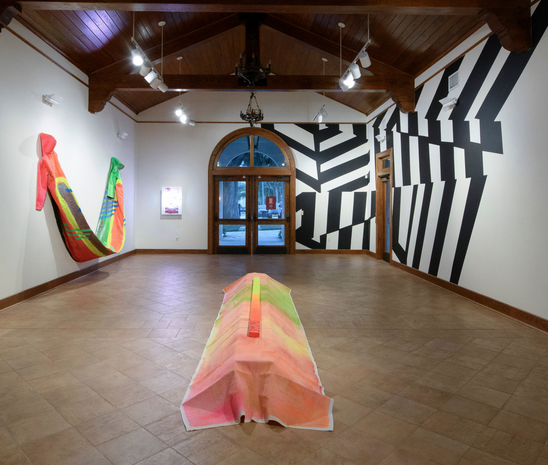
View of the exhibit at Crisp-Ellert.
Julia Paoli, a curator from Mercer Union in Toronto, says in her Curator Talk that the institution’s work “unfolds across a series of events and commissions…and allows commitment to long-term engagement and collaboration” with the artists.
Paoli said that she was “interested in NADI’s tongue-and-cheek approach for urgent institutional upending and wanted to think alongside and together with them about the structures of institutions themselves.”
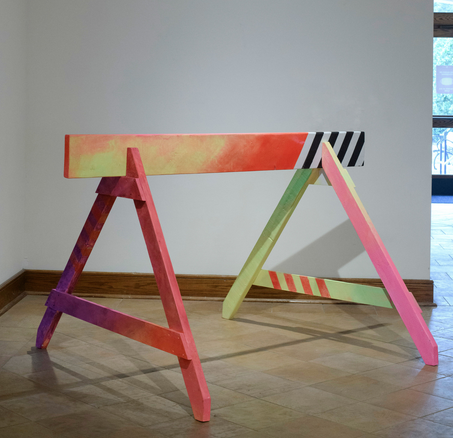
Maria Hupfield and Jason Lujan are separate artists in their own right, but have come together across different mediums to create NADI.
“I like it when I walk into an exhibit and I can’t tell where the art starts and begins, sort of assimilating into the room,” Lujan said in an Artist Talk at CEAM.
NADI’s traveling exhibition is in its third iteration at Crisp-Ellert after appearing at Mercer Union, with many of its original structures changing and morphing to highlight new facets of the exhibit with every installation. Hupfield and Lujan constantly explore how they can adapt a space to engage with a viewer.

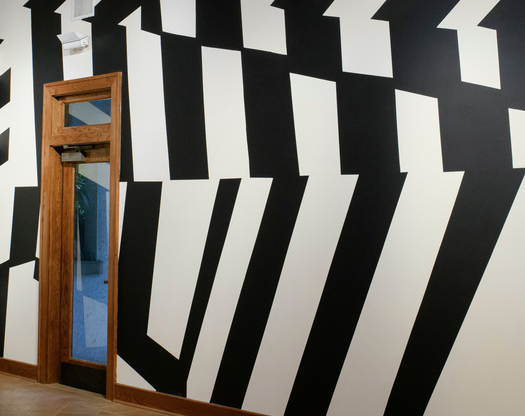
The artists in NADI defy the stereotype of traditional ideas concerning ‘Native art’ and what that should look like, while embracing their craft in its full expression.
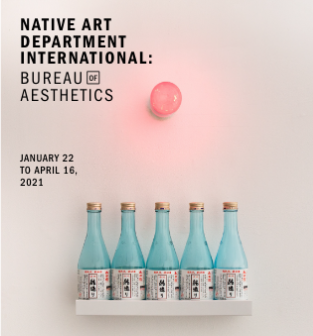
CEAM’s poster for NADI. The exhibit is available until April 16th 2021.
“There should be no separation of making art and living art”, Lujan said. “Building into the gallery experience we are reflecting that.”
Art/Photo Credits:
Native Art Department International: Bureau of Aesthetics, Crisp-Ellert Art Museum, Janaury 22 – April 16, 2021. Courtesy of the Artists.
Photo credit: Monarch Studio, St. Augustine, FL.
Bureau of Aesthetics was produced and organized by Mercer Union, Toronto, and guest curated by Julia Paoli.
Additional Links:
Jan 22 Curator Talk with Julia Paoli: https://www.dropbox.com/s/v67d7j8ywfkachc/Curator%20Talk-%20Julia%20Paoli-%201.22.21.mp4?dl=0
Feb 11 Art Talk with Maria Hupfield and Jason Lujan: https://flg-my.sharepoint.com/:v:/g/personal/anordelus_flagler_edu/ESS2LvuwFKxEh23lbpzICCkBeLdvvQWhPlhtYY72cEJXgw?e=uCVMIt
Link to a Virtual Walkthrough of the exhibit: https://my.matterport.com/show/?m=ZpXpErTjkXg .

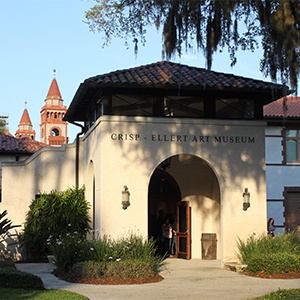

Be the first to comment on "Native Art Defies the Stereotype at Crisp-Ellert"